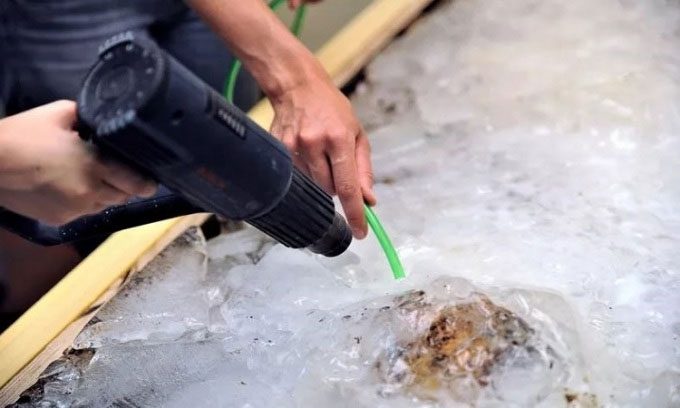Experts have employed a new technique to thaw the 1,300-year-old remains of a child dubbed the “Ice Prince” after freezing the skeleton in nitrogen for preservation.

Researchers thawing the 1,300-year-old remains of a child from the 7th century.
Bavarian Monument Conservation Office (Bayerisches Landesamt für Denkmalpflege – BLFD) excavated the grave in Tussenhausen, located in southwestern Germany, in October 2021 and discovered the “Ice Prince” remains buried alongside a sword and dagger sheath, along with many significant artifacts indicating that the child belonged to the nobility. The remains were found in remarkably good condition, as the stone burial chamber was sealed tightly, preventing any sediment from entering.
To protect the remains during transport from the discovery site in Tussenhausen, Bavaria, to the Bamberg storage facility, the expert team from the Bavarian Monument Conservation Office moistened the interior of the burial chamber to help stabilize the specimen and prevent shock. Earlier this week, they began thawing the remains of the child born in the 7th century for examination.
“The ice armor protection was carefully targeted and continuously broken through intentional heating. Our reconstruction team meticulously prepared for this process,” stated the BLFD. To thaw the remains, the block of ice containing the skeleton, weighing approximately 80 kg, was moved from the freezer to a specialized room. Researchers used special suction equipment to prevent condensation from the thawing process from damaging the remains. They also employed a cooling head to ensure “the temperature consistently remained at -4 degrees Celsius.”
The thawing process lasted several days. Following this, experts, including anthropologists and paleobotanists, will analyze the initial specimens. Subsequently, the research team will investigate the circumstances surrounding the child’s death and the textile technology of the Medieval period.





















































